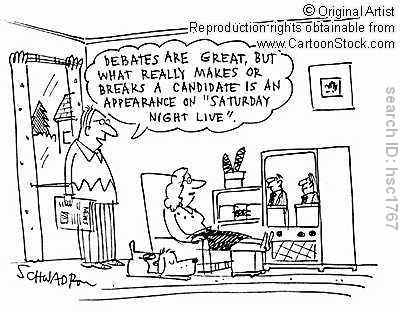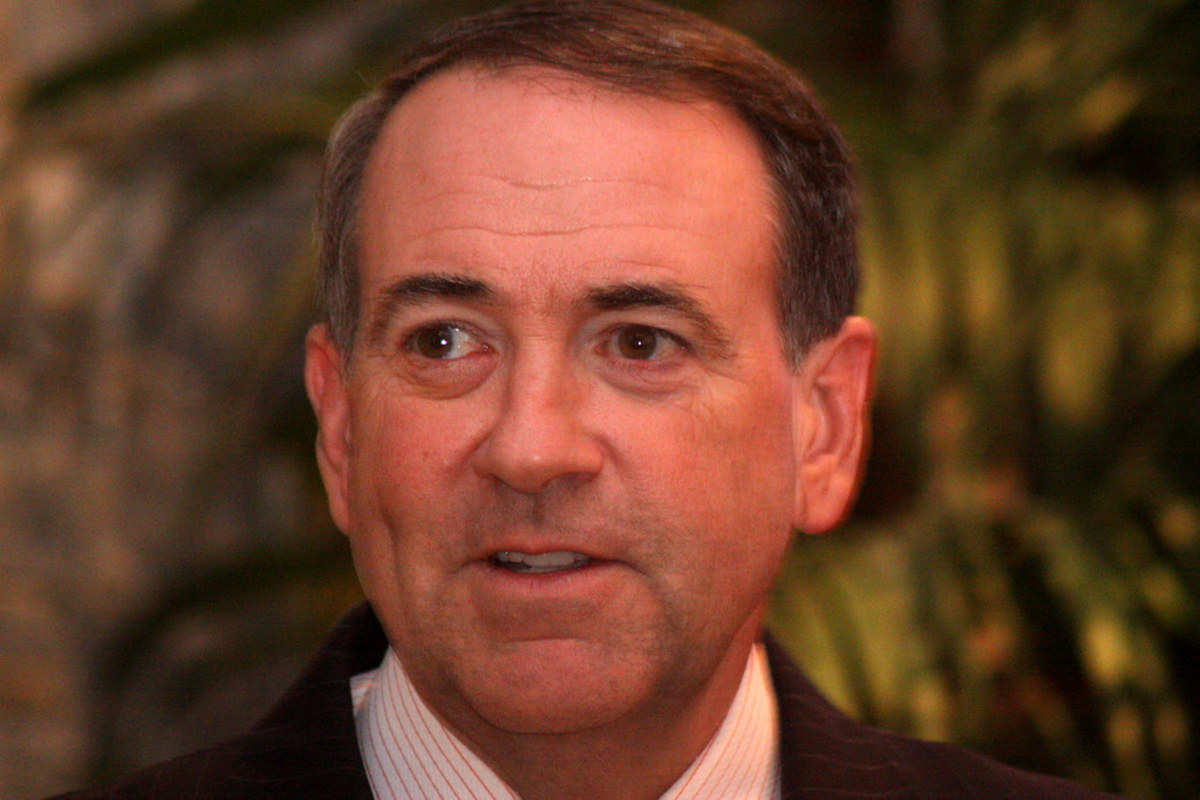Persuasive Techniques and Appeals used in Presidential Campaign Ads

Persuasion is used in everyday life. From mundane conversations to news and entertainment, to advertising, persuasion is all around us. The purpose of persuasion in advertising is to influence the viewer’s opinion, change the viewer’s attitude or behaviors, and affect the viewer’s decision making. There are many different appeals and techniques that advertisers use to best persuade their audience.
I know we can all name one type of advertising that uses an array of persuasive techniques: presidential campaign ads. We know this because we are currently being bombarded with such ads for the Obama versus Romney election. The whole point of a presidential campaign ad is to persuade the viewer on what candidate they should vote for. In order for a campaign to be successful, it must educate and prepare the voter to take action. This hub will observe and analyze the evolution and progression of the persuasive techniques used in former presidential campaign ads compared to those of today in an effort to determine which are more persuasive in content.
Campaigns ads differ from regular advertising commercials because it is not a product the advertiser is attempting to sell but a candidate. Each ad is meticulously planned. First, the advertiser must define their goals; then they create a strategy on how best to achieve those goals; next they use various tactics to put their strategy into action (Larson, 2007). Experts research their target audience to figure out how to best reach them. This is followed by press releases, print and electronic ads, and web pages (Larson, 2007). When this is completed, the campaign ads are developed and tested.
Each year candidates and parties spend hundreds of millions of dollars on political advertising (Franz & Ridout, 2007). The process has evolved over the years. Political campaigns used to start on Labor Day and end on Election Day whereas now they might start years in advance (Larson, 2007). The design is meant to present a positive image of the candidate. Campaigns often dramatize a candidate in order to receive a favorable response.
I Like Ike
Campaigns of today are intense, the tone serious, and relevant issues are addressed. This was not always the case. A 1956 ad for Dwight Eisenhower is a great example of how far presidential campaign ads have come. The 60 second spot titled I like Ike, showed a cartoon Uncle Sam wearing an Ike pen while leading a parade of people dancing, and shouting, “You like Ike, I like Ike, everybody likes Ike for President!” It did not state what Eisenhower’s policies were or what he stood for; there was not even a picture of him shown. No important issues were mentioned at all. At the very end of the commercial it says, “Now is the time for all good Americans to come to the aid of their country. Vote for Eisenhower.” Without a doubt, the ad is appealing and entertaining, but is it persuasive?
The last statement in the ad is an example of the use of God Terms. God terms are positive words that are said to carry blessings and demand obedience (Larson, 2007). ‘Good American’ and ‘country’ are prime examples of God terms. While subtle, it gives viewers an impression. They may think, if I do not vote for Eisenhower, I am a bad American and will be letting my country down, or at least that is what the advertiser would like the viewer to think. This is an example of how advertisers use guilt appeals to persuade their audience. Some studies suggest that individuals who are made to feel guilty are more likely to comply (Gass & Seiter, 2007). In this case, the viewer is told: do you want to be a good American? Then vote for Eisenhower!
Author Hugh Rank suggests that is important to determine what attention getting techniques are being used to appeal to the viewer’s emotions and hold the viewers attention (Larson, 2007). The Eisenhower campaign is extremely stimulating because of the upbeat song and cartoon. It grabs the viewer’s attention right away.
Kennedy Catchy Jingle
A 1960 campaign ad used for John F. Kennedy is similar to I Like Ike and is another commercial that would definitely be thought of as unconventional today. The advertisement shows cartoon signs and posters that say Kennedy for President, along with pictures flashing of citizens showing support of the candidate, and pictures of JFK himself campaigning and out in the community. To accompany the visual is a catchy jingle singing, “Do you want a man for President who's seasoned through and through, but not so doggone seasoned that he won't try something new? A man old enough to know, but young enough to do? It's up to you!”
While his opponent Richard Nixon was relatively young, Kennedy was only 43, which would make him the youngest president ever elected. Not only was he young, but he was Catholic and the United States had never elected a Catholic president before. The issues of this campaign were personal. The jingle goes on to sing
Do you want a man with spirit who is not afraid to fight? A man whose records show that he will fight for what is right. A loyal man who brings the job a fresh new point of view. It’s strictly up to you! And do you deny to any man the right he’s guaranteed? To be elected president no matter what his creed. It’s promised in the bill of rights to what we must be true. It’s strictly up to you! Do you like a man who answers straight, a man who’s always fair? We’ll measure him against the others and when you compare, you’ll cast your vote for Kennedy, a change that’s over due!
The jingle does touch on some of the issues at hand---Kennedy’s age, his faith, and the fact that he is something new at time when change is necessary. The advertiser took a tactical approach with this ad. They made a catchy jingle that is cheery and light in tone, while subtly reminding the viewer that it is promised in the Bill of Rights that we as the American people cannot discriminate against Kennedy because of his religion. Research suggests that music functions as a mnemonic device or put simply, music can assist in facilitating recall (Gass & Seiter, 2007). After watching the Eisenhower and Kennedy ads, the viewer has no problem remembering who the ad was for. Jingles often repeat the candidates name throughout so that the viewer is more likely to remember it (Gass & Seiter, 2007).
The advertiser is also capitalizing on inconsistency. They are saying, change is good and it is long overdue! Human beings tend to feel more comfortable when their lives are consistent. In this case, the advertiser is trying to create a psychological imbalance. They are telling the American people to have second thoughts about the service they have been relying on unquestionably for the last four years (Gass & Seiter, 2007).
Like the Eisenhower ad, the Kennedy ad also uses God Terms. When comparing the two ads, Kennedy’s does a better job of pointing out some of the issues, even if it is through a silly song.
This type of advertisement may have been successful at the time it was used, but it would not stand up today. It is a weak attempt at persuasion. If this same type of ad was used in the today’s election with Obama being the candidate, it would not have been taken seriously because it lacks credibility. The jingle may be fun and light but it is irrelevant. It is does not talk about important issues concerning the United States. Credibility is very important in order to be persuasive. In order to be considered credible, the viewer has to be believe the message. If the viewer does not perceive the communicator to be credible then the message falls on deaf ears and will not persuade one way or the other.
Nixon Now
Progressing into the 1970’s there is little change in persuasive tactics used in presidential campaign commercials. A 1972 ad for Richard Nixon advanced from the cartoons of the previous decade, but still featured a catchy jingle. The advertisement begins by showing happy pictures of butterflies, flowers, and smiling children; it advances into a video and images of Nixon and his supporters while the song sings “Reaching out to find the way, to make tomorrow a brighter day. Making dreams reality. More than ever, Nixon now for you and me.”
The ad is very flowery and appeals to the emotions. The advertiser uses warmth appeals to try to persuade the viewer. Advertisements that use warmth appeals convey a warm-fuzzy feeling and emphasize family, friends, and a sense of belonging; they make the viewer feel sentimental or nostalgic about life (Gass & Seiter, 2007). The commercial depicts Nixon in a positive light, out in the community among his supporters, smiling and shaking hands. These interpersonal encounters convey warmth because they produce a sense of friendship, bonding, and camaraderie.
The advertisement illustrates a strong use of haptics. Haptics is person-to-person touch that conveys feelings of empathy and reassurance (Larson, 2007). Showing Nixon shaking hands and touching other people assists in expressing warmth. The song also aids in conveying warmth as it is cheerful and upbeat.
Warmth appeals are an effective tool in persuasion if they are believable and come across as sincere. The ad was a success; we all know that Nixon won the presidential election of 1972. Perhaps voters were persuaded by this advertisement; it was not until later that Nixon’s sincerity was questioned.
The Bear
In the mid 80’s a major shift can be seen in presidential campaign ads. A 1984 ad for Ronald Reagan is open for interpretation. In the commercial, a grizzly bear is shown wondering through the woods. A man with a very deep voice, and serious in tone says:
There is a bear in the woods. For some people, the bear is easy to see. Others don’t see it at all. Some people say the bear is tame, others say it is vicious and dangerous. Since no one can really be sure who’s right, isn’t it smart to be as strong as the bear? If there is a bear.
At the end, Ronald Reagan’s picture is shown with the words “Prepared for Peace” written above it.
In order to best understand the meaning of the advertisement, one must consider where the United States was in terms of politics and national security at the time this ad was shown. The United States was concerned over the continual threat of the Soviet Union and the spread of communism. In order to ensure peace, one must prepare for the possibility of war. The bear is a potential enemy that could harm us. In order to ensure our safety, we must build up our army for the possibility that a fight may be necessary. This commercial is encouraging to air on the side of caution because it is best to be prepared for a predator.
This ad has a strong use of fear appeals. Advertisers, politicians, and the media use scare tactics to increase anxiety (Gass & Seiter, 2007). Fear appeals are very effective in producing persuasion. The ad is essentially saying there could be an enemy out there who could hurt you! Don’t you want to be prepared to take him on if necessary? The purpose is to scare the viewer into a response. If the viewer is convinced that they are in fact in danger and a recommended response is made clear to them, they are more likely to take action. This is called perceived efficacy. In this case, the proposed action is to vote for Reagan. Do not fear, because Reagan is prepared!
In the same way, the ad appeals to guilt. It is insinuating that you would feel bad if you did nothing to prepare yourself for this adversary! You could suffer for it! Guilt appeals are often successful tactics for a favorable response. Advertisers must be careful with the way they use this tactic, however. If the viewer feels guilty because they have done something wrong then they are not likely to comply. Therefore, guilt appeals should “emphasize the positive feelings that come from doing the right thing” (Gass & Seiter, 2007, p 279). In this case, the right thing of course is to vote for Reagan.
Another persuasive tactic that this ad evokes is the use of vocalics or paralanguage. The volume, pitch, rate, and tone of voice can play a huge role in persuasion and can indicate the ads emotions, goals, and sincerity (Larson, 2007). In the ad, the male voice is deep, concerning, and tense. The viewer knows that the message is serious. His voice is steady and the wording meticulous.
Background music was another attribution to the pervasiveness of this ad. While the viewer is hearing about the bear in the woods, in the background a steady beat of a drum can be heard, almost to mimic the sound of a heartbeat. This contributes to the intense tone of seriousness and fear. The combination of all of these tactics results in the persuasive appeal of the commercial; and we all know that Reagan too was elected.
Clinton for President
A 1992 ad for Bill Clinton differs greatly from those analyzed thus far. In the ad, Clinton is seated outside and is talking about the U.S. being overrun with poverty due to selfishness and greed; he suggests that both parties are to blame but it can be turned around by putting the people first. This is the first ad where we see the candidate one on one talking about important issues; there is no catchy jingle or background music, and the commercial certainly does not give the viewer any warm-fuzzy feelings.
Persuasion does not only take place verbally but can occur through nonverbal means as well. The first thing to take note of in this ad is Clinton’s kinesics or body orientation. He is seated facing slightly to the left. Because he is not facing the camera head on, he is not making eye contact. Eye contact helps express interest, attraction, dominance, and credibility (Gass & Seiter, 2007). Facing Clinton to the left may have been intentional to avoid showing dominance but was a poor decision on the advertiser’s part because there is a lack of sincerity. He appears to be reading from a teleprompter which is not good for credibility or doesn’t feel personal.
Clinton is hunched forward comfortably as if he were having a casual conversation. While slumping usually lowers persuasion, in this case it was most likely on purpose. Perhaps the advertiser was attempting to make Clinton appear more relatable by having him comfortably seated. Other ways they attempted to make him appear less stoic were through his clothing. He is wearing a button down shirt but his tie is loosened and his sports coat absent. This is all part of the appeal. He is talking about how the rich keep getting richer; he did not want to look like one of those rich guys to which he was referring. Viewers needed to feel like they could relate to Clinton and feel like he understood them. He was not going to express that through a fancy coat and tie. The purpose was for him to appear humble.
While looking casual, Clinton is still attractive. Attractive people are perceived to be happier, more intelligent, friendlier, stronger, and kinder (Gass & Seiter, 2007). The setting is also a contributing factor to the relaxing atmosphere. Clinton is seated outside with green trees in the background which helps to portray a calming feeling.
Clinton employs language intensity tactics to grab the viewer’s attention. Language intensity occurs when communication is vivid and imagery-provoking (Gass & Seiter, 2007). In the ad, Clinton says things like, “the middle class is collapsing; poverty is exploding.” This is an example of intense language because it paints a picture in the minds of the viewers; you can imagine the middle class literally collapsing in on itself like a burning building or poverty exploding as if a bomb went off. In this case, the vivid information helped the persuasiveness of the message because the two were congruent.
Low Road
Today we see a drastic change in presidential campaign ads than those of the past. The game today is played dirty with each candidate bashing their opponent. Rank’s intensify downplay model is a powerful strategy used. Researcher Hugh Rank created a model to describe major strategies that persuaders use. They either intensify their own good and downplay their own bad or intensify others bad while downplaying their own (Larson, 2007). This is apparent in a 2008 campaign ad for Barack Obama.
In the commercial, John McCain is criticized about his advertising. The ad says, “he’s running the sleaziest ads ever, truly vial.” Other disparaging words that are used are: dishonest smears, disgraceful dishonorable campaign, disastrous policies and deception. This ad intensifies the opponents bad by using devil terms. Devil terms are “terms of repulsion and express negative values” (Larson, 2007, p 129).
The Obama campaign produced another advertisement that not only intensifies John McCain’s bad points but intensifies Obama's good points. The advertisement begins with a slue of criticizing words against McCain. Halfway through the ad, the tone is switched; the music is lighter and more upbeat while there are praises for Obama. The ad is saying, this is why McCain is not a good choice and this is why Obama is better.
The Obama ad paints an ugly picture of McCain. While some of the things they said may be true, they are omitting many of McCain good qualities. In the same way, the ad portrays Obama as if he could do no wrong. The ad uses the Halo-effect by using one positive characteristic of Obama to cause people to see everything he does in a positive light (Gass & Seiter, 2007). That characteristic is change. Obama was something different. Advertisers capitalized on this in the campaign saying McCain had promoted the “same old politics, same failed policies.” Throughout the campaign, advertisers used repetition to engrain in viewers that McCain is the same and Obama is change. It became the theme of the whole campaign.
The Obama campaign is an example of capitalizing on inconsistency. Human beings are more comfortable when their lives are consistent but the Obama campaign is saying that it is okay not to be consistent after eight years of the same thing. The advertiser recognizes that voters may be set in their ways and seeks to overcome this by encouraging a change (Gass & Seiter, 2007).
Composition is another proponent of pervasiveness of the ad. McCain is shown in black and white; the photos are frozen while he is frowning. Obama is shown in bright colors with the American flag visible in the background; he has a smile on his face as do the people he is interacting with. This tactic allows for a direct compare and contrast of the two opponents (Larson, 2007).
Presidential campaigns have and always will employ persuasive tactics and strategies. The question is what exactly are these ads persuading viewers to do? Evidence does show that campaign advertisements can improve voter knowledge and interest in a campaign (Huber & Arceneaux, 2007). However, research shows little evidence that presidential campaigns persuade voters to alter their support for a candidate but rather they “mobilize voters and disseminate information that allows voters to make “enlightened” choices” (Huber & Arceneaux, 2007, p 958). These ads are informative and the viewer’s knowledge of the candidate is increased, but few studies have been able to prove that advertisements persuade people to change their minds.
Surely advertising must have some effect on voter choice or else why would political parties invest so much money into advertising? It is a unique study because it is so difficult to measure. For instance, one could reason that everyone who owns a television has had exposure to political advertisements but that does not necessarily mean that they have seen the messages the same number of times. A moderate television watcher would not have seen as many campaign ads as a frequent television watcher. Or perhaps the viewer has a DVR, records all of their shows, and fast forwards through all the commercials. This viewer would not have seen any campaign ads. Because repetition is important for persuasion to occur, this may have an effect.
Another important aspect to consider is if being exposed to equal amounts of competing messages will cancel each other out (Franz & Ridout, 2007). If a viewer sees 50 commercials for McCain talking about what a bad leader Obama is and they also see 50 commercials for Obama saying that McCain is just more of the same and we need change, that viewer is likely to get confused on what he or she should think and feel about the candidates. Research shows that in such situations little net influence takes place (Franz & Ridout, 2007).
Whether or not presidential campaign commercials actually affect voter response still remains in question. Because accurate studies have not been conducted to measure such a response, it is impossible to determine if advertising ads of the past are more persuasive than those of today. Logic would say that each of the ads that I just analyzed were appropriate for the time in which they were aired. That is to say, just as a catchy jingle and cartoon would not stand up in today’s advertising world, the dirty name calling ads used today would probably not have seen a favorable response in the 1950s either. If Eisenhower had a campaign ad criticizing Adlai Stevenson on his policies that probably would not have faired well because that is not the type of advertising the American people responded to at the time.
The evolution and advancement of campaign ads is apparent. While all of the ads I analyzed used persuasive techniques and appeals, the more recent employed more of these tactics. That is not to say that they are more effective in persuading their viewers, only that they put a greater effort into attempting to do so.
It is accurate to say that the style and format of presidential campaign advertisements will continue to evolve. Just look how far campaign ads have come; from the cartoons and catchy jingles of the 1950s and 60s to the more intense and serious tones of today. One can only wonder how much campaign advertisements will change over the next 50 years.
It is clear that persuasive techniques and appeals are attempted in presidential ad campaigns but do you think they are effective? Has seeing all the ads that have been streaming heavily for the past few months persuaded you on who to vote for? Why or why not? Please leave your comments below!
References
Franz, M., & Ridout, T. (2007, December). Does Political Advertising Persuade?. Political Behavior, 29(4), 465-491. Retrieved April 30, 2009 from EBSCOhost database.
Gass, R.H. & Seiter, J.S. (2007). Persuasion, social influence, and compliance gaining (3rd ed.). Boston: Pearson.
Huber, G., & Arceneaux, K. (2007, October). Identifying the Persuasive Effects of Presidential Advertising. American Journal of Political Science, 51(4), 957-977.
Larson, C.U. (2007). Persuasion: Reception and responsibility (11th ed.). Illinois: Thomson Wadsworth.







